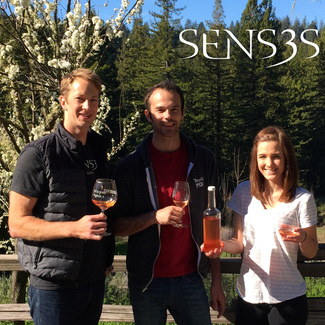We made a rosé this year and I’m going to tell you why you should drink it. Just the bare facts, simple and laid out for your consideration. It isn’t the best rosé in the world. We didn’t set out to make the best rosé in the world. Everyone else is already trying to make the best rosé in the world and many have already succeeded if you believe everything you hear. That’s boring. We set out to make a different rosé. One that pairs well with a lazy summer float down the Russian River in the California sun. A rosé that I could look at with a smug and satisfied air as I decline a PBR from my hipster friend in the tube next to me. A rosé that makes PBR drinking hipsters a little jealous.
We have so much in Sonoma and Napa. Great food, great outdoors and most of all great wine. Our soil and weather is so good that we can and often do make some of the best wines in the world. But as the globe shrinks, the world of wine gets a little flatter and the “best wines in the world” all start to taste a bit similar. Data and analytics teach the wine industry what consumers want and as a result trends have begun in winemaking that favor the uniform over the unique. For instance the average sugar level at harvest in California has risen steadily since the 1980’s. Some theorize this is thanks at least in part to the “Parker Effect,” where rising sugar levels are a product of wineries changing their practices to more closely match consumer demand. Are we on the path to a world where a California Pinot Noir will be indistinguishable from its cousins in vastly different climates around the globe? Will the unique character of the revered Burgundies slowly die away? Probably not, but the differences may be getting smaller.
So in 2014 we set out with our eye firmly turned away from what the critics told us was hot and in demand. We had no mathematical formula to make a wine that would sell. Instead we set out with our eye on your picnic basket, the bed of your pickup truck, that beer that you ground into the sand next to your fishing pole and wondered what wine belongs there. That’s how we got to our rosé.
It’s not aged in brand new French oak barrels that cost over a grand a piece. It’s simple and friendly. Neither is it made from the run-off juice from the sorting tables that was deemed unworthy of that $80 bottle of pinot. We grew grapes specifically for this wine.
Picked at 22 brix and directly pressed into the fermentor to go through primary fermentation without the skins, this wine has the crisp acidity of coastal vineyards with a delicate but healthy fruit component that will please all levels of wine drinkers. White peach, watermelon, ruby red grapefruit and racy acid. This rosé is an everyman’s wine. No kid gloves, no silver platters and no shouting from the rooftops about how amazing it is. That’s much too noisy. When we release it in spring just sit back, pour a glass, relax and see for yourself. And my apologies to PBR drinking hipsters everywhere.
– Myles



